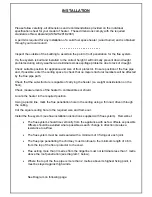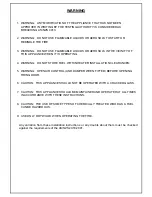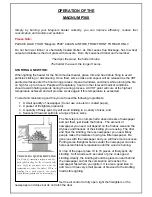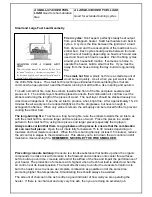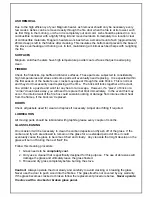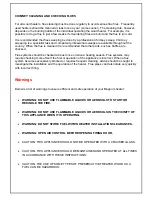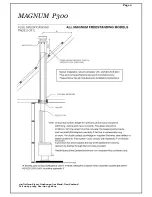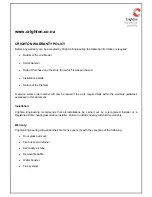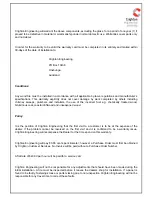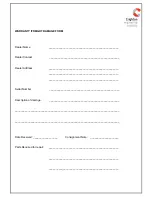
If there is a lot of charcoal you may be turning the combustion air down too soon after refuelling, or
not raking the charcoal to the combustion air inlet, or turning the combustion air down too low to
support efficient combustion, or all of the above.
REMEMBER: THE HOTTER THE FIRE, THE
LESS CREOSOTE FORMATION.
When you have mastered the techniques for efficient wood burning, here is what you should see:
1. When wood burns it should be flaming until only hot embers remain. If there are no flames,
something is wrong.
2. Firebricks in the firebox should be tan in colour, never black.
3. Steel parts in the firebox should be light to dark brown, never black and shiny.
4. With seasoned wood, correct air settings and proper loading arrangement you should
expect instant ignition of a new load of wood—the bottom pieces should be flaming by the
time the door is closed.
5. The glass door should be clear. A discoloured glass indicates that the wood is too wet or the
air control has not been left open long enough.
6. The exhaust coming from the top of the flue system should be clear or white. A plume of
blue or grey smoke indicates smouldering, inefficient combustion, air pollution and probably
low operating temperatures.
Correctly installed and operated, Magnum solid fuel heaters do not spill smoke into the house.
There are three main reasons why some woodstoves smoke:
Bad installation:
Incorrect flue installation, resulting in low flue temperatures and low draft, can
make a wood heater more likely to spill smoke. For example, flue systems that run up the outside
wall of the house and are not correctly insulated can rob the heat from the flue and produce very
little draft. Each elbow in the flue pipe assembly slows down the flow of gases and causes a small
restriction to flow. When a flue system includes more than one elbow, the restriction can be
enough to cause spillage.
Extreme negative pressure in the house:
Energy efficiency practices and new building code
rules are making our houses more and more airtight. This makes the houses energy efficient, but
also makes them more sensitive to negative pressure when air is exhausted from the house.
Large, fan-forced exhaust ventilators, like down-draft-type kitchen stove exhausts, can cause
extreme negative pressure in the house when they are operating. Because new houses are tightly
sealed, there are few holes to allow replacement air to enter, and the house pressure becomes
negative. This negative pressure works against flue system draft. In severe cases, the negative
pressure in the house overcomes the flue system draft and the appliance begins to spill smoke,
especially when a fire is started or when it dies down to coals. To prevent this extreme negative
pressure, one option is to open a window to allow combustion air into the room.



